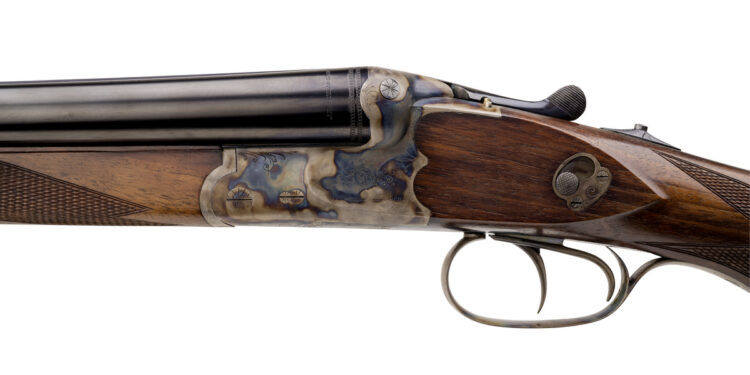By Jim Dickson
Unlike the U.S. Air Force, which thinks a hard-to-hit with skeletonized zip gun is a survival weapon, the German Luftwaffe went all-out, offering its pilots the ultimate survival weapon: a high quality, high priced, traditional German drilling-type rifle made by the illustrious J.P. Sauer and Sohn. This masterpiece of the gunmaker’s art had two 12-gauge barrels, with the right barrel designed for birdshot and the left barrel regulated for the famed German Brenneke shotgun slugs. Underneath the 12-gauge barrels was a 9.3x74R rifle barrel. This caliber is often preferred to its rival, the .375 H&H Magnum, which at the time, had seen numerous cases of poorly constructed bullets breaking up and failing to perform satisfactory on African game. The German ammunition makers made sure that ALL their bullets met standards and never failed to perform correctly. Not just most of them, like the numerous makers of .375 H&H Magnum cartridges did.

The utility of a 12-gauge shotgun on all sizes of birds and small game needs no elaboration. It has long been a favorite meat-getter around the world. The German Brenneke Torpedo Slug is not only super accurate, but it has also killed all African big game. A man armed with this drilling was able to take any game in the world while decisively dealing with any animal that attacked him. This is in sharp contrast to the U.S. Air Force survival guns which are chambered for the smallest and weakest small game cartridges and are virtually useless against many attacking big animals. It’s worth noting that after the war, I had a friend in Norway whose father was a commercial pilot flying the polar route. The airline had the same sort of drilling in the cockpit of every plane in case they went down. Being able to shoot seals and birds to feed the downed passengers and defend them against hungry polar bears was something that required this exact sort of gun. Once again, the value of human life was placed above the high cost of a top-quality weapon. They accepted the price for the ultimate subsistence and survival gun; a gun that was easy to make hits with and that they could be sure would provide sustenance and safety.
DEVELOPMENT
The survival drilling was the brainchild of Hermann Göring, the head of the Luftwaffe, Nazi-Germany’s air force. In addition to being a WWI fighter ace, Hermann had also taken over Baron Manfred von Richthofen’s command after the great ace was killed in combat. Göring was an avid hunter and quite an expert on sporting firearms. A former fighter ace himself; he wanted the absolute best for his fellow pilots in the Luftwaffe. He was keenly aware that the German drilling was the most versatile gun available, as it offered the ability to kill anything from birds to deer to elephants without changing the load in the gun. The word “drilling” comes from the German word “drei” which means “three”, hence it means a three-barreled gun.
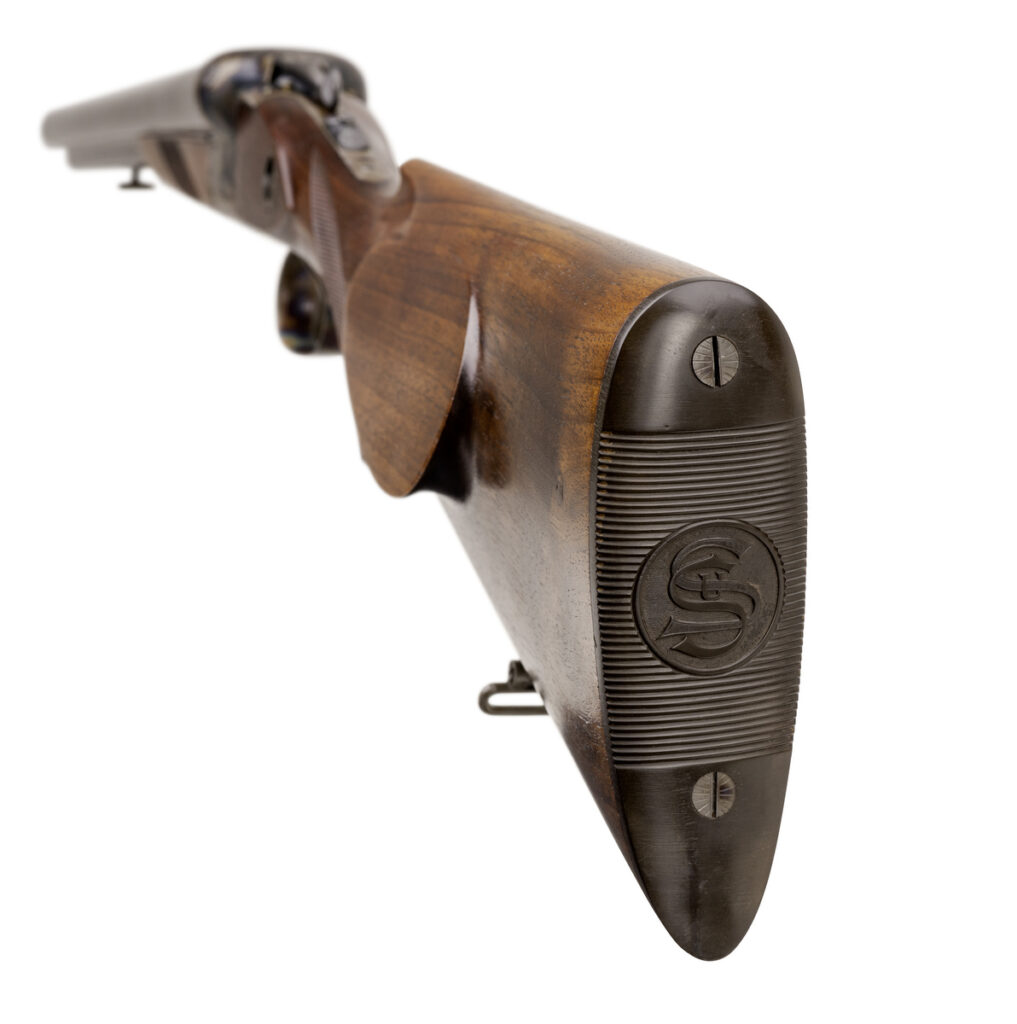
For the contractor, he chose J.P. Sauer and Sohn, one of the finest drilling-makers of all time. They did not disappoint him. The Sauer Luftwaffe drillings were made to the highest German standards. They were lively and accurate pointing as shotguns and steady when sighting as a rifle. If you couldn’t make hits with the M30 drilling, then you couldn’t make hits with anything.
SPECIFICATIONS AND OPERATION
The finished gun delivered to the Luftwaffe was 7.5 pounds and 42 inches in overall length with a 25.6-inch barrel. It was a blitz action, having the mechanism mounted on the trigger plate. There is a forever-unresolved dispute over whether the trigger plate action was first developed by the Scottish “best quality” gunmaker John Dickson and Son of Edinburgh, or it was developed in Germany. John Dickson and Son employed a lot of German workmen making his guns at the time, and there’s no way to know if they took the design to Germany or if they brought it from Germany. John Dickson and Son also made 3-barreled shotguns in all barrel positions, as the trigger plate action allows this. Again, we don’t know whether they or the Germans were the first to make a three-barreled blitz-action gun. One thing we do know is that John Dickson and Son patented the trigger plate action.
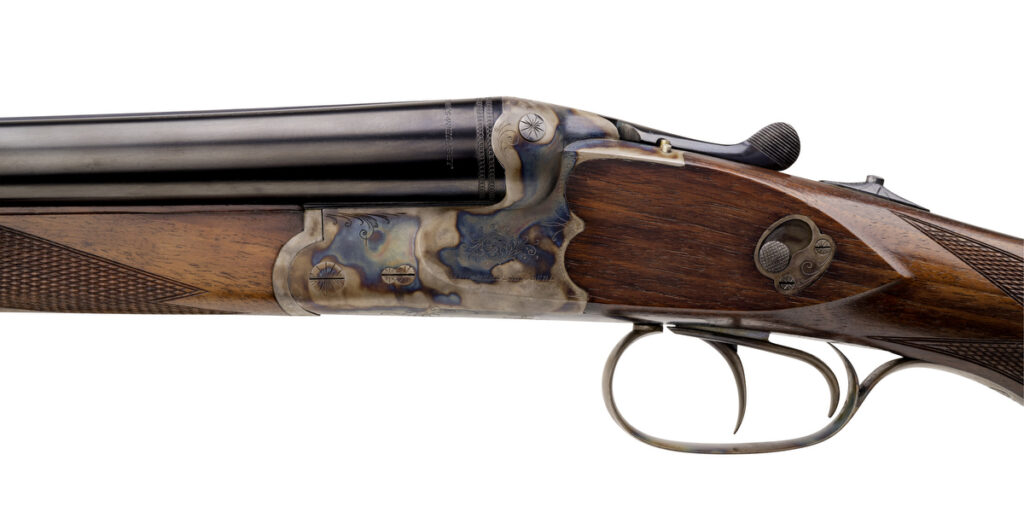
To give you an idea of the high standards required of a three-barreled gun I knew a man who had to choose between building both a best quality double shotgun and a best quality double rifle, or one drilling (all with hand tools) as a capstone project before he could be accepted into the Belgium Gunmaker’s Guild. He chose to make the two doubles. Drillings are hard to make.
The Sauer drilling has a Greener-style crossbolt, as well as the traditional double locking lugs under the barrels. A Greener-style safety on the side is used as the normal safety position for a double barrel gun is taken up by the barrel selector on the drilling. To fire the rifle barrel underneath the two shotgun barrels, you push the selector forward which causes the V-notch 100-meter rear sight to pop up and the front trigger to engage the rifle barrel. Pulling the selector back causes the rear sight to fold down and activates the two side by side shotgun barrels. The front trigger fires the right barrel with birdshot while the rear trigger fires the left barrel with the Brenneke slug.
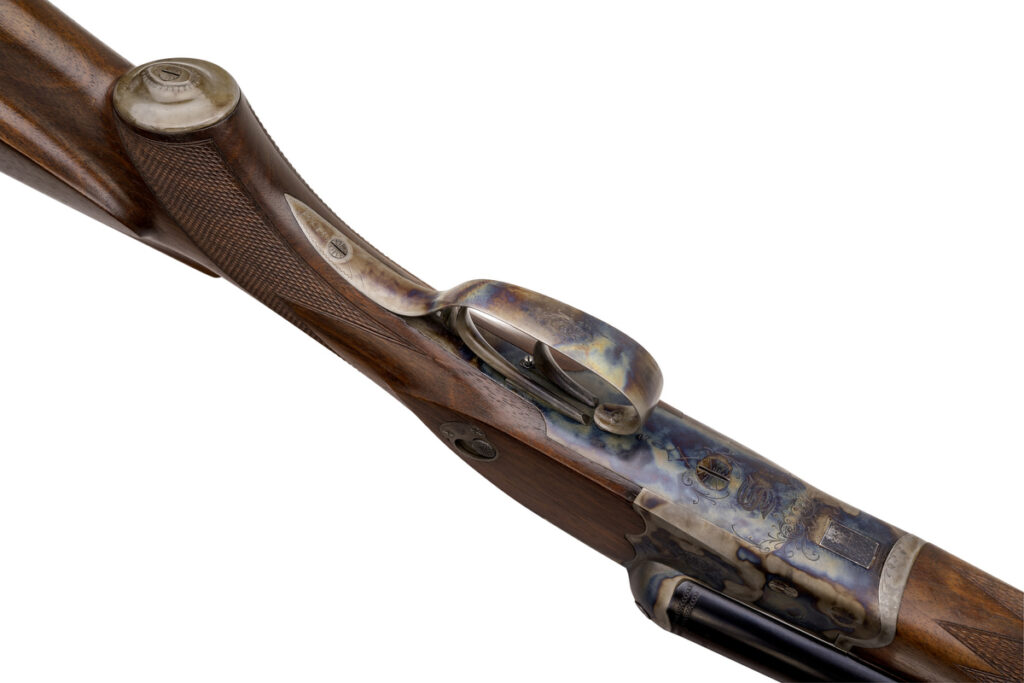
The barrels have side clips and there are gold-plated cocking indicators on the top of the receiver. The receiver is case hardened, and the blued barrels are made of the best Krupp steel.
There are three ordnance marks on the M30 drilling. The stock and the barrels both have the Luftwaffe Eagle, and the Luftwaffe ordnance stamp of Eagle 2 is on the front locking lug.
CASE
A gun without ammo and accessories is useless, so the M30 Luftwaffe Survival drilling came in a green-painted aluminum case. It weighed 32 pounds, fully loaded, and it was intended that the pilot would remove it from the plane after a crash landing. The case contained the drilling with the barrel and forearm separated from the action and stock in the European manner of trunk cases. It also contained a cleaning kit, sling (supremely important for an exhausted and possibly injured pilot in a survival situation), a 20-round box of 9.3x74R soft point hunting ammo, a 25-round box of 12-gauge Brenneke Torpedo slugs, and a 25-round box of 12-gauge birdshot shells. You can live off the land for quite a while with this kit.
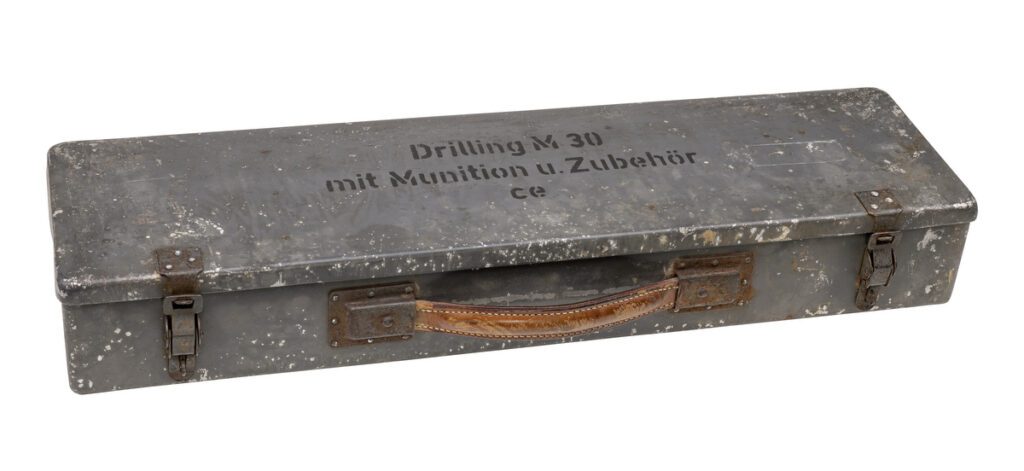
USE
The M30 was standard issue for Messerschmidt BF109 fighter planes and Stuka dive bombers during the North African campaign where it was well appreciated by pilots flying over the Dark Continent. It also was used for trap shooting, as this training was mandatory for fighter pilots. Hermann Goring also presented some of them to Luftwaffe heroes. The Knights Order of the Iron Cross may have been a great honor for a Nazi pilot, but this was a practical gift that promised many days of peacetime pleasure. Since the drilling is a traditional German sporting gun, these could expect to see a lot of use.
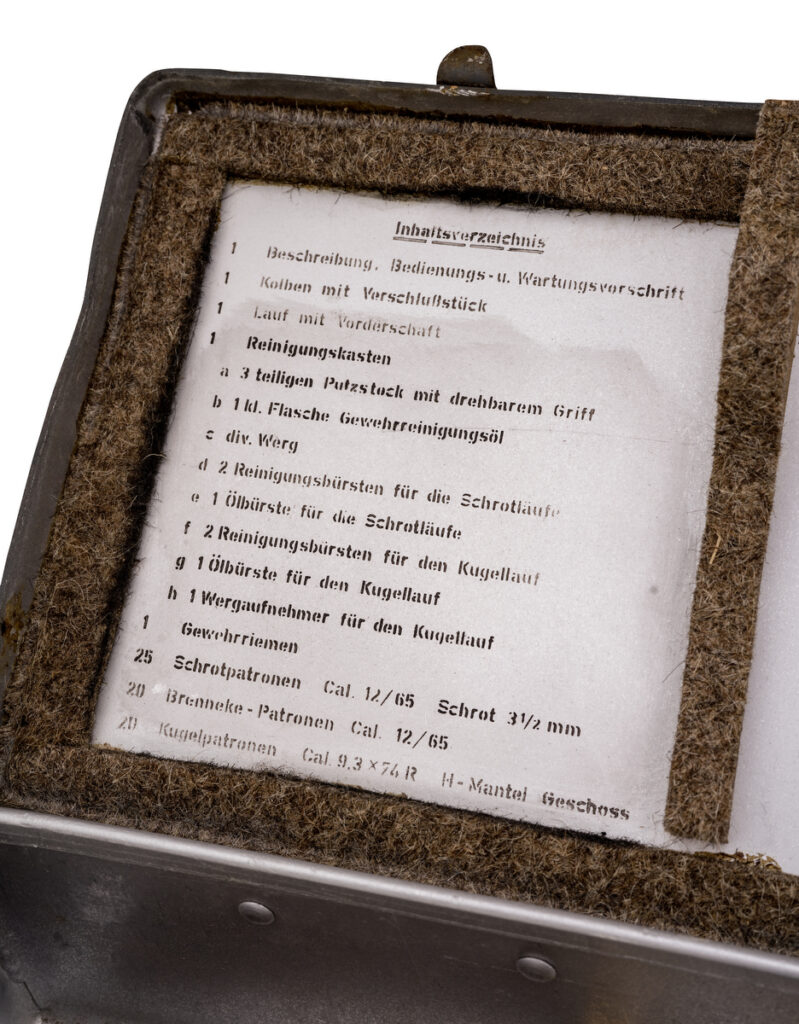
CONCLUSION
Issuing such a high-quality weapon is the ultimate expression of the high value that a military places on its members. This was a situation where only the very best would do. Having been a licensed Alaskan trapper and a subsistence hunter, I consider this the ultimate subsistence hunting gun. I would love to have a drilling like this stocked to my measurements. The last thing I would want is one of the American Air Force skeletonized “survival” guns. I have never seen a real subsistence hunter using such garbage. They sought after the best gun they could get for their pilots, and the Germans got it right with the M30.



